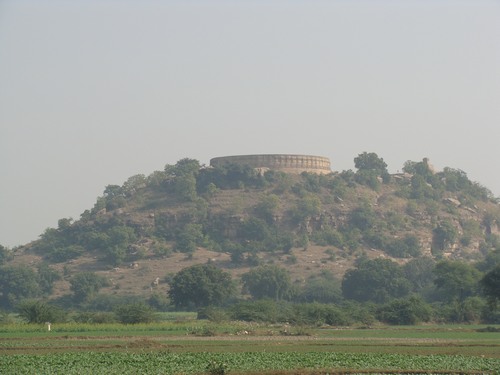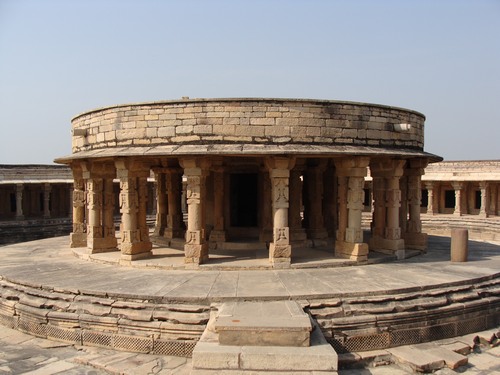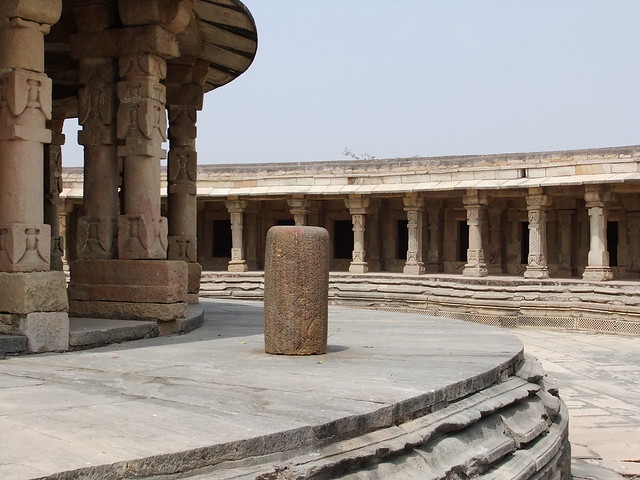


Notice: This is the official website of the All Empires History Community (Reg. 10 Feb 2002)
Women & Yoga |
Post Reply 
|
| Author | |
Sidney 
Colonel 
Joined: 31-Jan-2012 Online Status: Offline Posts: 690 |
 Quote Quote  Reply Reply
 Topic: Women & Yoga Topic: Women & YogaPosted: 10-Feb-2012 at 10:24 |
|
Yoga is a very popular pursuit for many women and men as a form of exercise and meditation, and all round well being. But whenever I see old images of it practised in the East it is always shown with men performing the postures.
Is yoga traditionally a male only pursuit? Can some one show me images or a reference in old literature to women practising yoga? |
|
 |
|
Nick1986 
Emperor 

Mighty Slayer of Trolls Joined: 22-Mar-2011 Location: England Online Status: Offline Posts: 7940 |
 Quote Quote  Reply Reply
 Posted: 10-Feb-2012 at 19:04 Posted: 10-Feb-2012 at 19:04 |
|
Yoga was invented by Hindu ascetics seeking to gain enlightenment or moksha. It dates back to the time of the Indus civilisation and may have been derived from ancient shamanic rituals.
Origins of yoga |
|
|
Me Grimlock not nice Dino! Me bash brains!
|
|
 |
|
Sidney 
Colonel 
Joined: 31-Jan-2012 Online Status: Offline Posts: 690 |
 Quote Quote  Reply Reply
 Posted: 10-Feb-2012 at 21:34 Posted: 10-Feb-2012 at 21:34 |
|
Thanks. At first quick scan, historically women were viewed as worldly orientated, intrinsically impure and lacked the ability to be celibate because they had no semen to control. Female ascetics existed, but they had an ambiguous, uncomfortable position within the community. A womans role was to perform rituals and acquire ascetic goodness to contribute to the family or spouse, not for her own enlightenment. Some areas changed and yoginis became equal with yogis, but were still often seen as a tool for the yogis to acquire higher enlightenment through, either by the use of or the abstinence from.
I guess I'm dealing with a very large area and a very long time frame. |
|
 |
|
Toltec 
Arch Duke 
Shape Shifter Joined: 12-May-2011 Location: Hyperborea Online Status: Offline Posts: 1748 |
 Quote Quote  Reply Reply
 Posted: 11-Feb-2012 at 14:19 Posted: 11-Feb-2012 at 14:19 |
|
I always thought Yoga was a largely female thing, most evening classes were almost entirely women.
Showing how old I am I remember when there was no cable or satellite tv and only 4 channels. There was a great show and I video'd it, called naked yoga, from the late 60's/early 70's I guess from the hairstyles and kaftans they were wearing, but repeated in the 80's. Ran on tv, and consisted as a programming format exclusively of pretty girls, no clothes and yoga.
I must say as a young (pre) and later teenager, this was the kind of programming I appreated and played a formative part of my youth. "Long live female yoga, even if clothed" (though preferably not) Edited by Toltec - 11-Feb-2012 at 14:21 |
|
 |
|
TheAlaniDragonRising 
AE Moderator 
Spam Fighter Joined: 09-May-2011 Online Status: Offline Posts: 6084 |
 Quote Quote  Reply Reply
 Posted: 11-Feb-2012 at 14:31 Posted: 11-Feb-2012 at 14:31 |
|
This might be of some interest to look into. 
http://bodydivineyoga.wordpress.com/2011/02/25/did-women-invent-yoga/ Edited by TheAlaniDragonRising - 11-Feb-2012 at 14:32 |
|
|
What a handsome figure of a dragon. No wonder I fall madly in love with the Alani Dragon now, the avatar, it's a gorgeous dragon picture.
|
|
 |
|
tjadams 
Chieftain 
Suspended, go back to historum Joined: 17-Apr-2011 Location: Texas Online Status: Offline Posts: 1188 |
 Quote Quote  Reply Reply
 Posted: 11-Feb-2012 at 14:56 Posted: 11-Feb-2012 at 14:56 |
|
I like my women able to flex & bendable. :)
|
|
 |
|
Sidney 
Colonel 
Joined: 31-Jan-2012 Online Status: Offline Posts: 690 |
 Quote Quote  Reply Reply
 Posted: 11-Feb-2012 at 17:10 Posted: 11-Feb-2012 at 17:10 |
|
Thanks Alani. Lots to investigate and think about from that article;
Like the idea of "female Buddhas" existing in Old Europe 6,000 BC. Bit anachronistic! |
|
 |
|
Don Quixote 
Tsar 
Retired AE Moderator Joined: 29-Dec-2010 Online Status: Offline Posts: 4734 |
 Quote Quote  Reply Reply
 Posted: 21-Feb-2012 at 11:04 Posted: 21-Feb-2012 at 11:04 |
|
Traditionally women weren't given a chance to be something else but housewives and mothers, I suppose because too many would choose to be something else and men will find themselves fixing their own meals, besides the female life expectancy was lower than males' due to death in child labor, so women were too valuable a factor for the surviving of a social group to be let go.
Bhagavat-Gita talks that one is supposed to keep away fro, family and women, if one is to achieve enlightenment, but concedes that ever low-born and women can achieve such if they follow the way to there. But in reality, they weren't allowed to do so. Yoga is fashionable among western one, not among eastern ones, who in their majority are stuck in the traditional female role. I used to be much into yoga when young, now I habitually lack time or space to do it as a 30 min. daily program, I'm having too much fun here on the forum  but it's great for keeping one's body flexible and younger for longer, especially for women with problems like arthritus in keens and hips, muscular problems, etc.. but it's great for keeping one's body flexible and younger for longer, especially for women with problems like arthritus in keens and hips, muscular problems, etc.. |
|
 |
|
Don Quixote 
Tsar 
Retired AE Moderator Joined: 29-Dec-2010 Online Status: Offline Posts: 4734 |
 Quote Quote  Reply Reply
 Posted: 13-Apr-2012 at 01:25 Posted: 13-Apr-2012 at 01:25 |
|
I just followed a standard yoga book, for everyone. In it there is a chapter for pregnant women, with asanas especially for them, but everything else is unisex.
|
|
 |
|
Sidney 
Colonel 
Joined: 31-Jan-2012 Online Status: Offline Posts: 690 |
 Quote Quote  Reply Reply
 Posted: 14-Apr-2012 at 04:30 Posted: 14-Apr-2012 at 04:30 |
I'd see that as a marketing ploy. Not neccesarily a bad one, but a way of keeping your target demographic group (i.e. health/mystic conscious women)none the less. |
|
 |
|
Guests 
Guest 
|
 Quote Quote  Reply Reply
 Posted: 27-Nov-2012 at 03:56 Posted: 27-Nov-2012 at 03:56 |
|
The fleece pants are so comfortable but ARE not like yoga pants. they
are very thick - something you wouldnt want to work out in.
unfortunately they do not have yoga pants.
|
|
 |
|
Nick1986 
Emperor 

Mighty Slayer of Trolls Joined: 22-Mar-2011 Location: England Online Status: Offline Posts: 7940 |
 Quote Quote  Reply Reply
 Posted: 27-Nov-2012 at 07:36 Posted: 27-Nov-2012 at 07:36 |
|
SPAM!
|
|
|
Me Grimlock not nice Dino! Me bash brains!
|
|
 |
|
Jinit 
Knight 
Joined: 16-Mar-2013 Location: India Online Status: Offline Posts: 86 |
 Quote Quote  Reply Reply
 Posted: 23-Mar-2013 at 01:31 Posted: 23-Mar-2013 at 01:31 |
|
My theological knowledge of Hinduism is very limited, however as far as I know Yoga is more than just physical exercise and its ultimate goal is Moksha ie liberation from the cycle of death and rebirth.
And if we look in the context of this borader defination of Yoga, then there is a sact of Hinduism who is dedicated to the Yogini - a feamle master practioner of Yoga (the male version is Yogi) There are 64 famous Yoginis - some of them are considered incarnations of famous hindu goddesses while the others are considered ordinary women who attained the the enlightenment. The cult was famous in the parts of northern India particularly in central India and in the Orissa during medieval time period. And the temple of Yogin was circular in shape unlike the normal Hindu temples with the shrine of Shiva in the centre. Currently there are only 4 temples dedicated to the Yoginis in India. Most famous one is in the Hirapur Orissa. Also sometimes the cult was associated with the tantrism and might have been associated with dark practices. None the less the proportion who practiced the drak magic remained very low in number. Another famous temple is situated in Mitoli, Madhyapradesh which was built in 9th century. The temple is restored by the Archeological survey of India and its missing the idols of 64 yoginis. Edited by Jinit - 23-Mar-2013 at 01:33 |
|
 |
|
Post Reply 
|
| Forum Jump | Forum Permissions  You cannot post new topics in this forum You cannot reply to topics in this forum You cannot delete your posts in this forum You cannot edit your posts in this forum You cannot create polls in this forum You cannot vote in polls in this forum |
Copyright ©2001-2009 Web Wiz
This page was generated in 0.066 seconds.











 Printable Version
Printable Version Google
Google Delicious
Delicious Digg
Digg StumbleUpon
StumbleUpon Windows Live
Windows Live Yahoo Bookmarks
Yahoo Bookmarks reddit
reddit Facebook
Facebook MySpace
MySpace Newsvine
Newsvine Furl
Furl Topic Options
Topic Options






